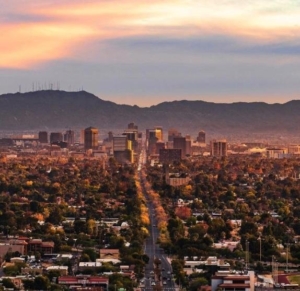| The largest tax cut in Arizona history is a win for all residents.
As President Biden and congressional Democrats push enormous federal tax increases, Arizona taxpayers can find comfort in the fact that they will soon receive the largest tax cut in state history. This is a huge win for all residents.
Arizona Republicans delivered a pro-growth tax package that will streamline Arizona’s income tax to a flat rate of 2.5%.
This new rate is lower than Arizona’s current bottom income tax rate of 2.59%, meaning the tax package will provide a tax cut and a rate cut to every single income taxpayer once fully implemented.
This great news comes despite the tax and spend lobby’s attempt to block the 2.5% flat tax from taking effect. The Arizona Supreme Court recently ruled that a measure being pushed by those special interests to undo the tax cut is not constitutional.
Tax cut will keep Arizona competitive
In addition to allowing individual taxpayers, families and small businesses – which file their taxes on the personal side of the code – to keep more of their own money, the Republican tax package will also ensure that Arizona’s income tax remains competitive in the economy of tomorrow.
Over the last decade, people and jobs have migrated out of high tax states and into states that impose low- and no-income taxes. The flexibility to work remote is amplifying this trend. To compete for that investment, a growing movement of states are working to reduce and phase out their income taxes.
Right now, there are eight states – including Arizona’s neighbor Nevada and nearby Texas – that do not impose individual income taxes of any kind. New Hampshire will become the ninth no income tax state as soon as it completes a five-year phase out of its 5% tax on interest and dividend income.
More than a dozen states – including North Carolina, Mississippi, Iowa, Louisiana, Oklahoma and Kentucky – are jockeying to be the 10th state added to the “no income tax” list.
It’ll make it harder to increase taxes, too.
Rather than sitting back and allowing Arizona to fall behind, Gov. Doug Ducey, House Majority Leader Ben Toma, Sen. J.D. Mesnard, House Speaker Rusty Bowers, Senate President Karen Fann, Senate President Pro Tempore Vince Leach and many others worked tirelessly to make Arizona the frontrunner in the race towards lower income taxes.
Arizona’s current top tax rate – used by employers to make decisions about investment – is now 4.5%. It will be streamlined to a flat rate of 2.5% over the next few years.
This will ensure Arizona remains attractive to jobs and opportunities, and, most importantly, provide a tax cut and a rate cut for all income taxpayers.
The new rate will catapult Arizona from 16th lowest top individual income tax rate – counting the nine states that do not tax wage income – to the 10th lowest.
Adding to this great news, the 2.5% flat tax will protect everyone from future income tax increases.
Graduated taxes divide taxpayers into groups, allowing politicians to play them against each other and ultimately rob them all, one at a time. Flat or single rate taxes, on the other hand, put all taxpayers on the same team and require politicians to answer to everyone together.
This makes it much harder for taxes to be increased.
A lower rate would provide even more relief
And, now that the Proposition 208 “surcharge” – the massive tax increase on small businesses – has been struck down, lawmakers have a unique opportunity to redirect those savings into lower an even lower income tax rate of 2.3% without changing the size of the tax package delivered last year.
Such a move would provide even more relief to all income taxpayers.
The flat income tax is a win for all Arizonans.
It will allow small businesses to invest more resources in their employees and business operations, and will allow households to keep more of their hard-earned money at a time they are facing sky-high gas prices and the worst inflation in nearly four decades. |











